Text
Never seen this interview before.
Another Sir Terry Pratchett interview on the details of writing Good Omens with Neil Gaiman. (More about this process x).
Question about how he goes about collaborating with someone else ( @neil-gaiman).
Terry: “You make them do what you want”.
Gary Cornell came up with something very apposite talking about working together, he says : It’s not that (each) of you does 50% of the work, each of you does 90% of the work.
Um. The way we did it then, and I can’t really speak as an expert because its the only time I’ve ever done it and other people do it in different ways, it wasn’t a case of, the way the Americans tend to do it, um, is one person writes a draft and the other person goes in and noodles with that draft. We did the whole thing from the ground up; each was doing bits. The ad hoc way we had of working, it’s simple: I’ve got a track record writing novels, Neil hadn’t. So I became like the editor, the taskmaster. Because the other thing is the practical problem about two people 120 miles apart doing something, is that, um, it would be different now, but in those days we had no reliable means of electronic communication. We could connect computers together with modems and then spend the whole evening at cross purpose and ringing each other up and saying “I’m getting lots of little faces and shit like that all over..”
Three quarters of an hour and about eight phone calls, you actually managed to transmit about 2000 words you could have actually phoned and sneezed in a morse code.
[w]hen we were doing the first draft of the film script, we were both members of CompuServe so crappy our BT rural lines that the quick efficient way was for me to go into CompuServe and leave the work I’d done in Neil’s mailbox on the computer in Ohio or someplace and later that evening he would dial CompuServe in America and download it from Ohio or wherever it was.
So in order to get the script 120 miles, electronically it was doing about 10000. This is from the global village.
What we would do is I would hold the master copy and sometimes work would have to stop for 24 hours because stuff was in the post, because the nightmare, the absolute nightmare which I knew would happen if we let it, was that somehow we’d end up with two master copies in existence with little, minute changes, and we’d never be able to spot which was which.
So the last thing we wanted was two master copies, and we worked on the phone who did what. I did a bit more than Neil, of that anyway. But, it also felt to me to be an awful lot of the glue that no one wanted to do because it was easy to do set piece scenes and written on a kind of, on the kind of plot somewhere you get A and B to F and X and Y across to C T. And that really is like 3000 words where you have to move people around and then,you know, shove extra bits in; so I ended up probably doing near 75% of the book.
I would probably say because it’s, because had we’ve done it any other it would’ve been like three months longer to do.
Also part of the process from another interview with Terry Pratchett:
Q: Let's talk a bit about the book you collaborated with Neil Gaiman on: Good Omens. That was before email, so how did it work on a practical basis? What was the most challenging aspect of writing with someone else?
I'm sure what I have to say will echo what Neil has said. When two people work on a book, it isn't a case where each one does 50% of the work. Each one does 100% of the work. There are some bits in Good Omens which I know are mine. There are some bits in Good Omens which I know are Neil's. There are some bits which were Neil's idea which I wrote, and there are some bits which were my idea which Neil wrote. Some bits we no longer know exactly whose ideas they were, or who wrote them. By the time we'd gone through all the drafts, it had been written by some sort of composite entity. We wrote it in the 14th century. We each had one phone line and a 1200 baud modem. We'd work it out: "OK, you send, I'll receive." Sometimes it would take 20 minutes to half an hour before we could send the stuff. It would have been cheaper and easier to have rung each other up and sneezed out the text in Morse Code. I was the Keeper of the Disks. I insisted that there should only be one official version in existence at any time. The moment it split into two, we would be in dead trouble. But Neil would sometimes send me a disk with 2000 words, saying " This is the scene with so and so -- insert it here." It more or less worked. It took us about six weeks to do the first draft. I think it worked because, at the time, we were each making a name for ourselves in our respective fields. It's not that we didn't take it seriously. But we were relaxed. We thought we would earn some holiday money by doing it. The nice thing about collaborating is that there is one other person in the world who is thinking about the exact same thing that you are thinking about. We both have a similar reading background, I suppose. It was quite rare when one of us came up with something that the other guy didn't know about. So we could bounce ideas off one another quite easily.
279 notes
·
View notes
Photo
Local libraries are a godsend to everyone. Unfortunately folk underestimate how much goes on there, from groups for toddlers to ones for those of the older generation, and everyone in between. I'd be lost without mine. Use it before you lose it 📚
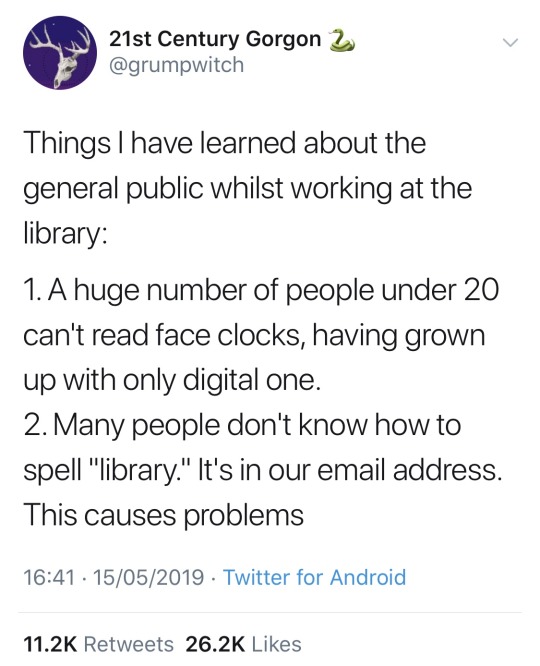
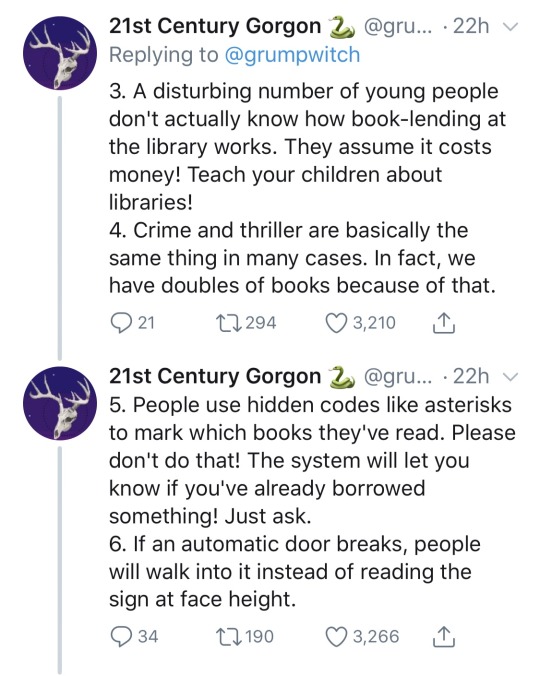
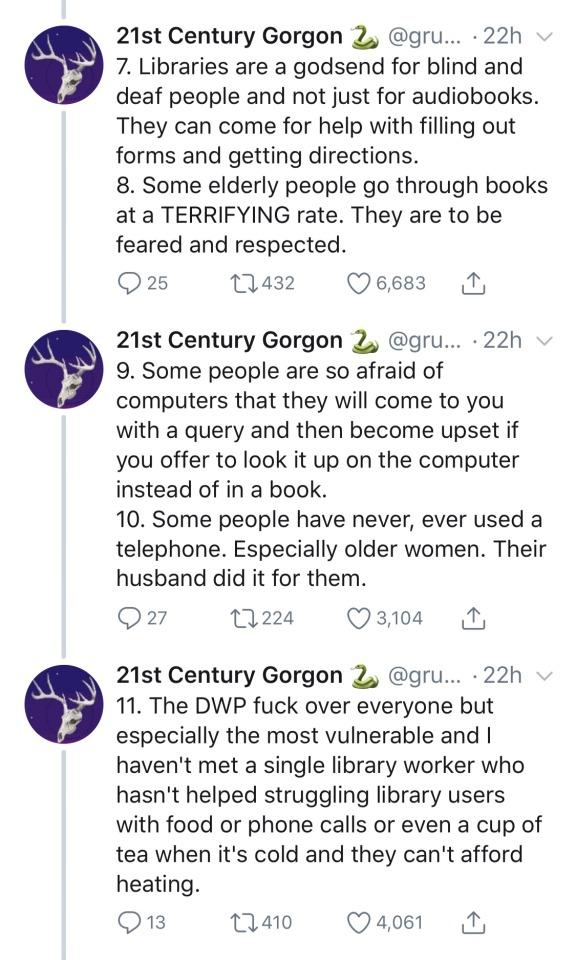

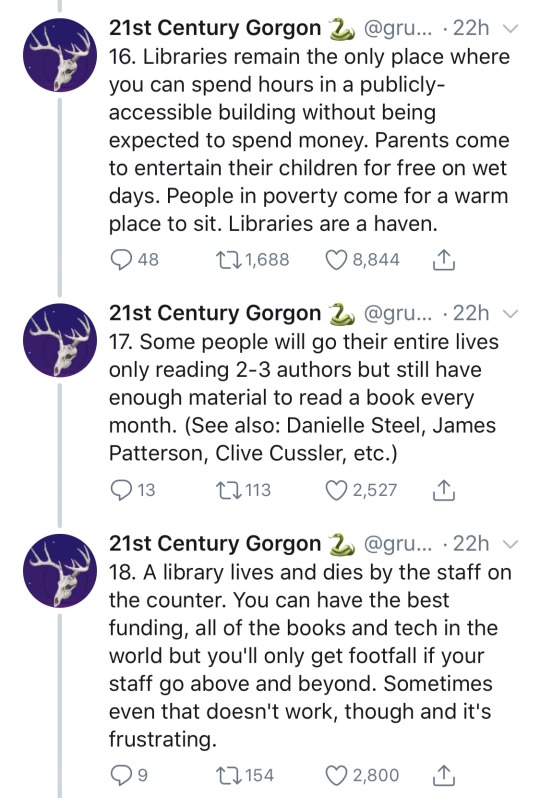
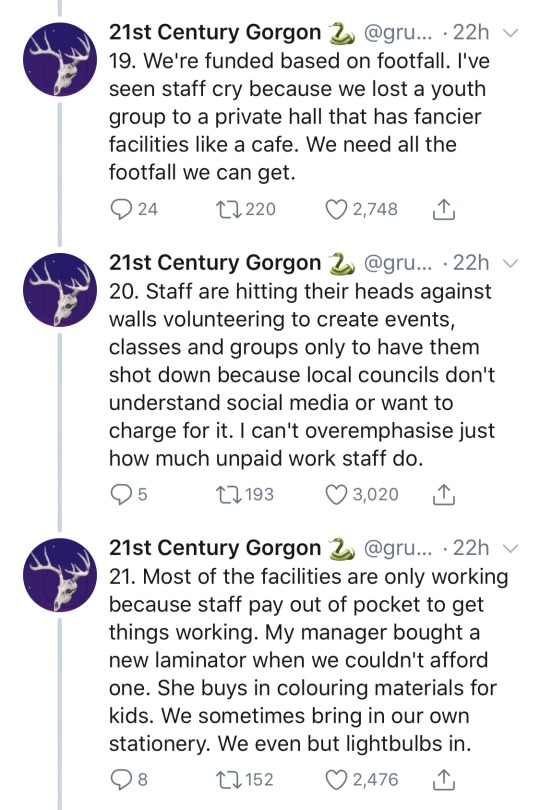
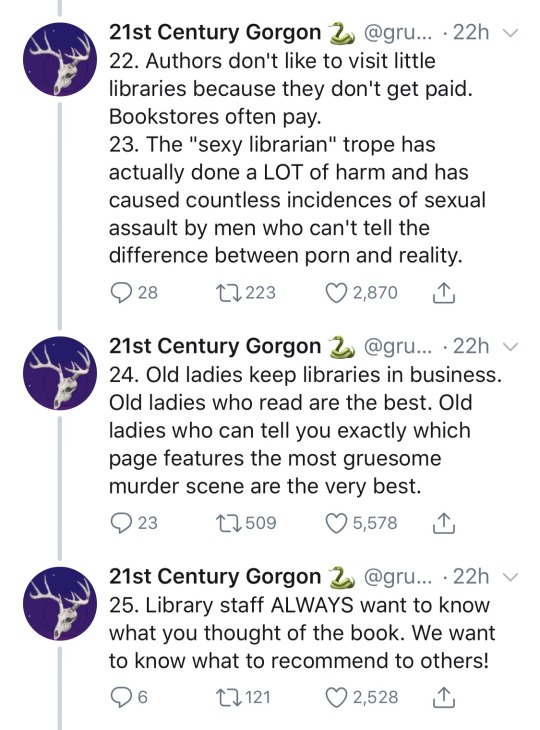
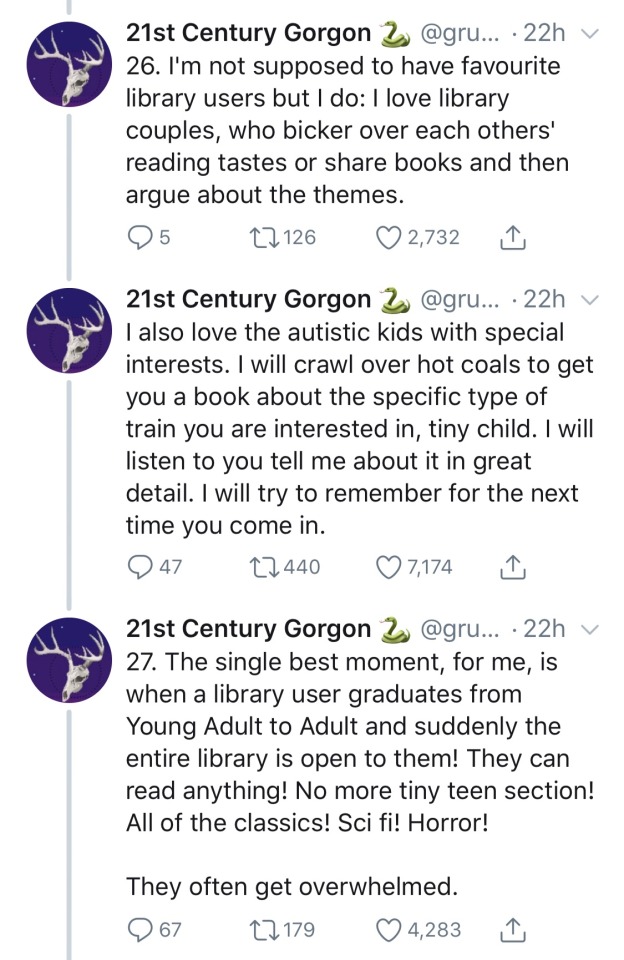
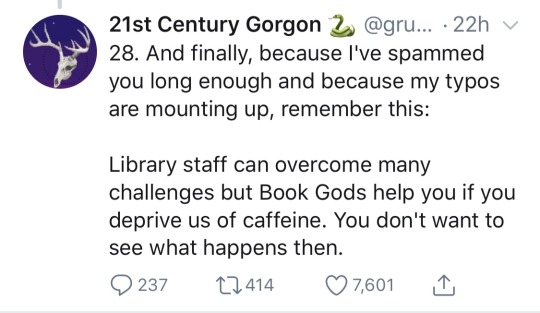
308K notes
·
View notes
Text
Ooh, Linda's worked out another way to help me spend my money. #GhostChildren #PinkPalace
Big things coming to all you @neil-gaiman fans in the next week you’ll need to watch this space and hope you see anything that Neil might repost #superexciting #books #buttons #other #red
7 notes
·
View notes
Photo
Wow, this is truly stunning 😍

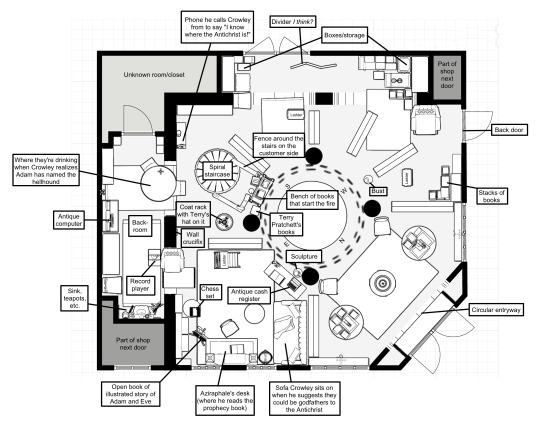
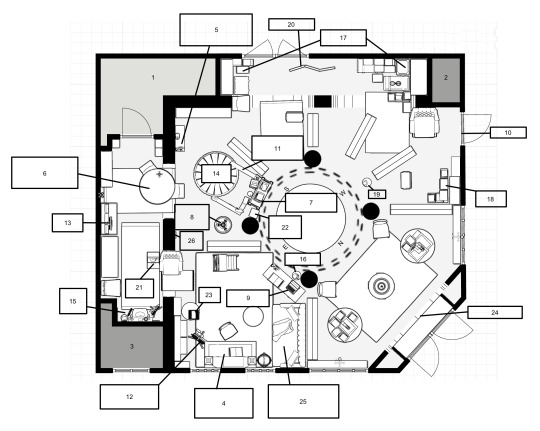
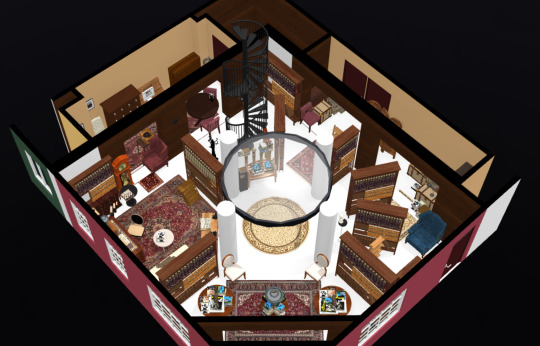
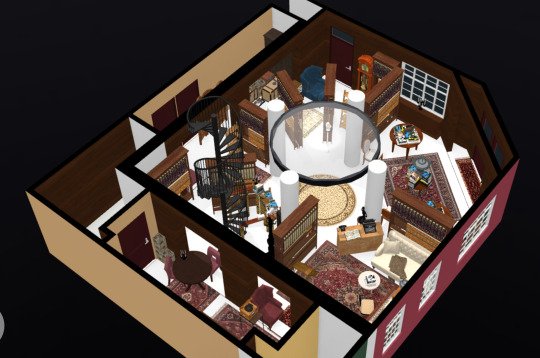
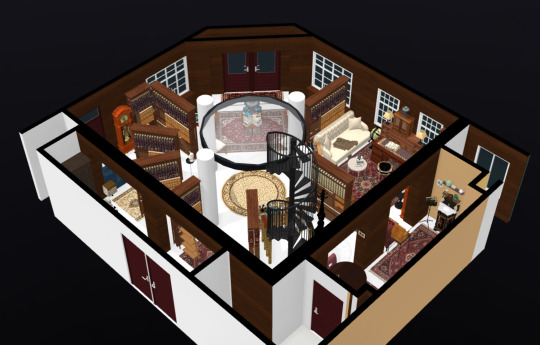
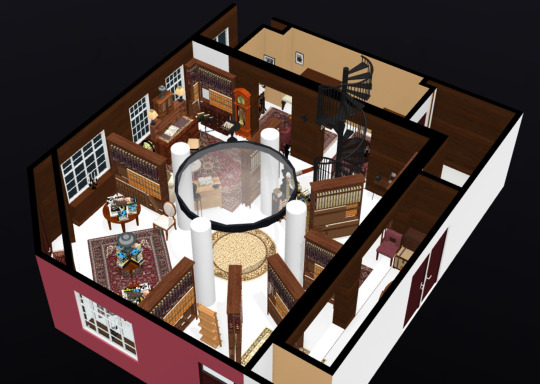
I created a 3D model and floor plan of Aziraphale’s bookshop in Good Omens!
I really wanted one for reference and it seemed like many others did too, so I put together my best approximation of where everything is. Beneath the color version, you’ll see I’ve included two simplified, labeled versions of the plan. The verbal labels are so you know what the object is. The numerical labels are there to make it easy to find more information about the object. I’ve put a numbered index below the cut that features the relevant reference images I used for each object and some more information about why I put it where I did/why it’s relevant/etc. I want to be very clear that I did not add anything to this from my own imagination; every single item and feature represents something I actually saw in the shop.
If you have any questions or want more information about this, PLEASE do not hesitate to ask! I put so much time into figuring it out and I would be more than happy to be a resource for anyone who needs it. Also, if you notice any errors, let me know and I’ll update the post. I hope this is helpful!
Update: Here’s a link to an interactive view of the shop! It takes a moment to load. You can click the “3D” tab in the top right to view it in first person and walk around inside. Double click a spot on the floor to move there and pan around by clicking and dragging. The oval symbol next to the person walking gives you a birds-eye view.
Update 2: Here’s a higher quality rendering of the first person perspective! Update 3: I made an alternate first person render here complete with a ceiling, light fixtures, and ambient lighting from outside. This one is optimized for making it seem more like you’re actually there, whereas the previous one is for maximum visibility. This render also has some minor accuracy improvements, which are detailed under the cut in the relevant sections. (The first interactive link with the birds-eye view updates automatically.) Update 4: In case you’re interested in Aziraphale’s books specifically, I’ve made a catalogue of those here.
Keep reading
11K notes
·
View notes
Text
There was no way I was missing out on this. Was looking forward to the @colleendoran art (love your work Colleen), but the bonus of a Frank Quitely dust cover made my heart sing.

#GoodOmens#GoodOmensGraphicNovel#NeilGaiman#SirTerryPratchett#ColleenDoran#FrankQuitely#RobWilkins#Dunmanifestin#kickstarter
1 note
·
View note
Text
Just finished my first watch of #Goodmens2. Thank you @neil-gaiman and everyone else involved. I am now an emotional wreck. What an ending ❤️
5 notes
·
View notes
Text

Crowley now has a Bentley to 'go too fast' round London with Aziraphale. Thanks to @legoankhmorpork for the instructions and @neil-gaiman and #SirTerryPratchett for #GoodOmens.
12 notes
·
View notes
Text
COLD WEATHER TIPS FROM SOMEONE WHO LIVES WHERE IT’S COLD:
I always see posts about layering clothing, but there are so many more creative ways to help keep you warm if you don’t have a lot of warm clothes. But first, a note on layering clothing:
-Your underlayer is your WICKING layer. That means it is a layer specifically to absorb the moisture your body produces. DO NOT USE COTTON AS A BOTTOM LAYER. Use merino wool if possible, but other good substitutions are nylon, polyester and rayon.
-Your middle layer is for insulation. You want AIR POCKETS in there, NOT tight fitting clothes. This is where you want to put your fluffy sweaters, your fleece, down, fur, flannel, or vests. If you do not have these, you can substitute with multiple layers of long sleeve shirts.
-Your outer layer is for keeping the cold away from your body. If you do not have a jacket, you can put on your thickest piece of clothing and then a raincoat over it. Windbreaker if you have one.
ALSO
-Jeans are the absolute worst at holding heat. Use only as a last resort.
-You can’t really ever have too many layers on your feet. Alternate tucking your layers of pants into your layers of socks to keep your ankles warm!
-Wear a hat OVER a hood if it will fit! This will keep your ears warmest.
TAKE OFF/OUT ANY AND ALL JEWELERY/PIERCINGS
-If you have a medical bracelet, DO NOT REMOVE IT. If you can, tuck a layer of clothes between it and your skin.
NON-CLOTHING TIPS:
-Raid your recycling. Gather all cardboard boxes and break them down so that they are flat. Put them on the floor to add more layers between you and the cooling house. Newspaper will also serve the same purpose.
-In an emergency, you can also layer newspaper between clothing layers. Don’t worry about looking stupid if you’re staying warm.
-If you have a tent, set that sucker up in whatever room you have decided to stay in. Stay in it and keep it zipped shut as much as you can, but do NOT cover the vent at the top. You can put the rain fly up, but make sure there is circulating air for you to breathe.
-You are probably not going to feel very hungry at times. DO NOT STOP EATING OR DRINKING. Digestion produces a lot of body heat and the food will give your body energy to keep itself going.
-The best foods are heavy and full of carbs and proteins. Eat nuts, eggs, pasta, meats, and beans. If you are on a diet, now you’re not. If you’re vegetarian… bulk up on those pastas and nuts.
-Try not to sweat. If you are finding yourself getting damp, take off the outer layer just until you start to cool slightly. Then redress! Your bottom layer should dry quickly, and being wet is dangerous.
-On that note, STAY ACTIVE. You are probably going to want to hunker down and snuggle up, but that will make your muscles cramp. Every 15-20 minutes do something that gets you up and about. Walk circles in the room, do a couple jumping jacks, stretch, whatever. Just enough to move some blood around your body. Don’t get sweaty or out of breath, it’s just a little movement.
-CHAPSTICK. ON YOUR LIPS. ON YOUR NOSE. ON YOUR EARS. ON YOUR KNUCKLES. Don’t let your extremities get dry or cracked.
SIGNS OF HYPOTHERMIA:
-Uncontrollable shivering -Slurred speech -Confusion or memory loss -Dizziness or lack of coordination -Inability to be woken from sleep
CHILDREN AND INFANTS!!!! I CANNOT STRESS THIS ENOUGH.
-Children WILL get colder before you. Make sure they are properly bundled up.
-If you need to breastfeed, put a blanket over the both of you and wait a few minutes for the air to warm before removing or shifting your clothing.
-DO NOT COVER AN INFANTS FACE. ESPECIALLY WHEN SLEEPING. Keep them tucked inside your own clothes when possible. As close to your heart and stomach as possible.
-Put chapstick on children’s cheeks and clean their face often if they are crying or wiping at their nose. This will prevent cracked skin and irritation.
-Make sure your children are staying as hydrated as you! They are going to fuss and not want to drink cold things, but they NEED liquids.
SIGNS OF HYPOTHERMIA IN INFANTS AND TODDLERS ARE DIFFERENT:
-Shortness of breath -Cold, red skin -Lethargy or listlessness
Finally:
CHECK ON YOUR NEIGHBORS. CHECK ON CHILDREN. CHECK ON THE ELDERLY. STAY SNUGGLED. STAY SAFE.
71K notes
·
View notes
Note
I an blaming everyone in this conversation for my latest purchase. Thank you to @neil-gaiman and @petermorwood for enriching my reading experience with new authors and books. And for helping my 'to read' pile be nearly as tall as I am 😂

Have you ever made the acquaintance of Diane Duane, or do you know of her in a general fellow-writers sort of way? She’s quite wonderful.
She’s lovely. In the Good Old Days she and her husband Peter Morwood and Terry Pratchett and I would eat together whenever we found ourselves in the same place, or try and sit together if it was one of those long tables you wind up at when a dozen or more people at a convention head out into the night to find somewhere to dine. I have fond memories of those conversations to this day.
2K notes
·
View notes
